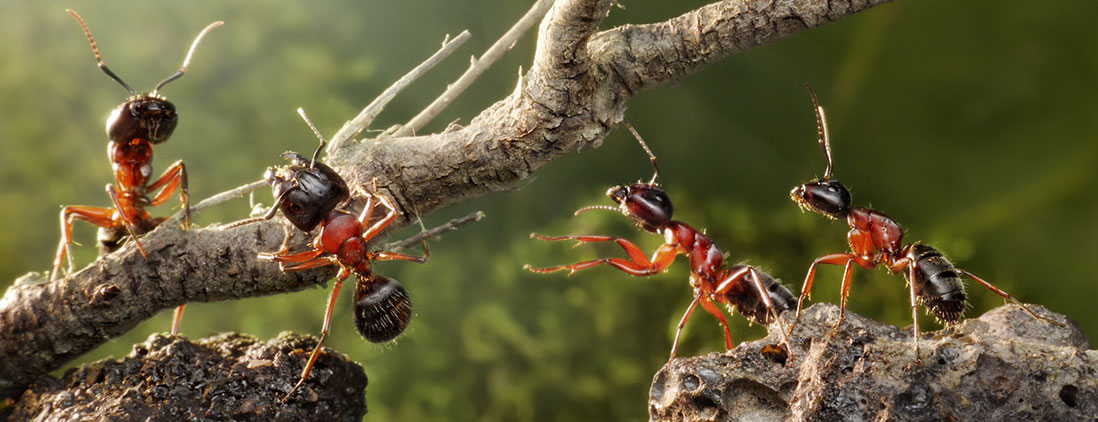
Ant, as creatures who exist only in a social sense, and not as individuals, live in large colonies. Colonies typically have a queen who lays eggs and countless adult workers, as well eggs, larvae, and pupae. There are far more workers than any other type of ant in the nest. Workers are all female, but not all female ants lay eggs. Rather, they work to construct the colony, and maintain it, to forage for food for the colony, they also tend to the brood and the queen and they defend the nest.
The actual queen and the male ant are only present in a nest for a short period of time. They only visit the nest for a short period, in order to procreate, and then fly away to establish new nests. These are the winged ants that can sometimes be seen flying about. The male ant looks more like a wasp than an ant. Workers in one nest can all be of one size, or they can vary in size - it depends on the species of ant.
Ants, like human societies, are often carefully delineated into a division of labour. This means that certain ants will be allocated to certain tasks in the nest and others to other tasks. Often, younger ants will remain in the nest, with the chief labour being to care for the brood - the pupae, larvae and eggs. More mature workers will undertake next construction and maintenance. Later life ants are foragers. They are the expedition team that are sent from the colony to look for food.
This division of labour and cooperation of labour is incredibly efficient, meaning that ants are able to maintain their existence robustly in a way few other animals can manage.
Ants can be both scavengers and predators. They feed on scraps and sometimes prey on other arthropods, such as aphids, or they will harvest seeds from plants and trees. Solid prey is intended only for larvae and the liquid foods are reserved for adult ants. Queen ants or honey ants will receive their food through 'trophallaxis.' This is a process where food stored by the adult ants is collected in the digestive systems upper part and regurgitated to be consumed by the colony-bound ants.
Honey ants are interesting - they will remain entirely in one spot in the nest. They receive food from the foragers. They exist only as a living larder, available for when the ant colony's supply of food diminishes.
Safe, effective and Reliable Pest Control

